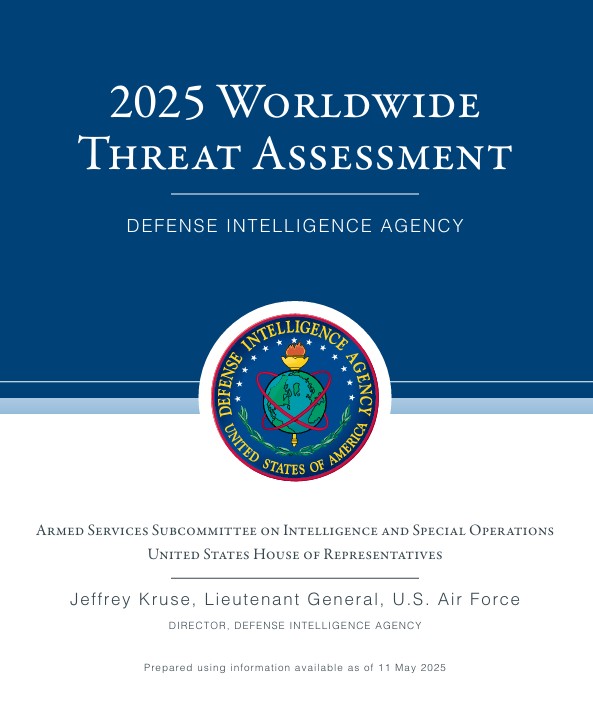El trabajo clandestino, y más específicamente las operaciones de inteligencia humana encubierta (HUMINT), constituyen la forma más exigente desde el punto de vista psicológico y moral del espionaje. Los recolectores de OSINT y “soldados de escritorio” no experimentan el duelo que siente un oficial de inteligencia en campo. Los oficiales de caso, ya sean operativos de los servicios de inteligencia o investigadores encubiertos de las fuerzas castrenses, reclutan, desarrollan, manejan y, en teoría, protegen a sus agentes (denominados “fuentes” o “activos” en el lenguaje de inteligencia, “CIs” en el caso policial), instruyéndolos en las técnicas adecuadas para robar secretos y traicionar a sus colegas sin ser descubiertos. Estas actividades se llevan a cabo habitualmente en zonas denegadas (países autoritarios, territorios controlados por cárteles, etc.). Cuando los agentes operan en estos entornos hóstiles, las apuestas suelen ser “de vida o muerte”. Ser descubierto significa que el activo será torturado, ejecutado, y sus familiares perseguidos y/o igualmente asesinados. A medida que pasan los años de servicio, es casi inevitable que algunos agentes sean comprometidos y perdidos. La carga emocional que soporta el oficial responsable de su supervivencia es profunda, marcada por el duelo, la culpa y una persistente sensación de fracaso moral.
El vínculo humanitario y la inversión psicológica
La clave del éxito como oficial de caso radica en el cultivo de una relación profundamente personal, una estrecha relación con su fuente. Una verdadera amistad basada en la confianza, la empatía y un propósito compartido es imprescindible. Un estudio psicológico sobre la obtención de inteligencia reveló que las estrategias no coercitivas combinadas con la creación de vínculos generan una adquisición de información más rica y precisa, subrayando cuán vital es la conexión emocional para la eficacia y la confianza (Goodman Delahunty et al., 2014). Estos lazos profundamente humanos significan que los oficiales comparten alimentos, confidencias y toman medidas proactivas para proteger a sus agentes. Los vínculos interpersonales resultantes trascienden las promesas profesionales formales. Esta inversión emocional implica que, cuando un agente es capturado, desaparecido, torturado, asesinado (o todo lo anterior), el oficial experimenta no solo un fracaso operativo, sino también una pérdida personal profunda. Carga con la responsabilidad de la seguridad del agente, por lo que cuando todo falla, el oficial de inteligencia sufre invariablemente un sentimiento de culpa personal. La culpa del sobreviviente entre aquellos que “sobreviven” mientras otros perecen está bien documentada en la psicología del trauma (Herman, 1992).
Culpa del sobreviviente y herida moral
La culpa del sobreviviente se refiere a la angustia y al auto-desprecio que sienten quienes sobreviven a alguien cuando desempeñaron un papel sustantivo en el destino de esa persona. En HUMINT, los oficiales sienten que fallaron a los agentes que reclutaron, agentes que confiaron en ellos de forma implícita. Esto coloca a los oficiales en riesgo de sufrir una herida moral, una condición en la que las acciones u omisiones violan su código moral. La pérdida de un agente puede desencadenar una culpa intensa. “Pude haber hecho más.”, “Debí haber detectado el compromiso.”, o “No les protegí como un padre protege a su hijo.”, son castigos emocionales comunes que uno se inflige a sí mismo. Un artículo reciente sobre la pérdida traumática destaca cómo la culpa del sobreviviente puede evolucionar hacia una vergüenza crónica y una rumiación autodestructiva si no se aborda adecuadamente (Robinaugh et al., 2014). Este fenómeno se alinea estrechamente con lo que los oficiales de inteligencia veteranos comparten en informes posteriores a las acciones: culpa agravada por la naturaleza clandestina de su relación con los agentes, donde dicha culpa debe permanecer oculta tras la compostura profesional y juramentos de confidencialidad.
El duelo bajo el manto del secreto
A diferencia de la pérdida de un combatiente jus in bello, las muertes o detenciones de agentes rara vez reciben reconocimiento ni se honran públicamente. No hay pompa fúnebre, ni ceremonias conmemorativas, ni celebración de la vida ni de lo que la fuente aportó. El mundo clandestino no otorga medallas a los agentes que desaparecen. Los oficiales de inteligencia lloran en silencio y aislamiento, con escasas vías oficiales, poco reconocimiento y, a menudo, sin medios prácticos o legales para cuidar a la familia de una fuente. La literatura psicológica destaca el duelo complejo, el duelo no expresado ni reconocido, como factor que impulsa la depresión, el TEPT y manifestaciones físicas de enfermedad (Neria, Nandi y Galea, 2008; Robinaugh et al., 2014). En la HUMINT clandestina, los agentes operan durante años dentro de estrictas normas de oficio, con apoyo cercano de su manejador. Los oficiales de caso que manejan agentes únicos desarrollan vínculos morales y emocionales significativos con ellos. Perder a un agente no es solo un fracaso táctico dentro de las estrategias de recolección de la agencia de inteligencia. Es la muerte de alguien íntimamente conocido y, a veces, también la pérdida de su familia.
Las complejidades morales de la manipulación y la traición
El trabajo HUMINT implica inherentemente manipulación, el cultivo y dirección de individuos que traicionan a sus países o cómplices. No existe una manera elegante de describir esto. Enseñamos a los activos a mentir, robar y llevar vidas dobles peligrosas. Los operadores encubiertos deben ejercer presión emocional, a veces recurrir al engaño, y no infrecuentemente al soborno, “. . . para garantizar lealtad y obediencia” (Lau, 2022). Tal como se informa en Intelligence & National Security, la manipulación es parte del oficio, pero cuando la influencia se convierte en coerción o engaño, surgen dilemas morales. Cuando un agente se pierde, el oficial puede preguntarse, y con frecuencia lo hace: “¿Lo manipulé hacia este desastre? ¿Traicioné mi propio código moral al empujarlo a un peligro extremo?” La investigación advierte que la manipulación psicológica “apunta a modos de pensamiento inconscientes, intuitivos o emocionales, . . . violando la autonomía, la libertad y la dignidad” (Lau, 2022). El reconocimiento propio del operador HUMINT de su participación conlleva a menudo un alto precio emocional.
Formación frente a experiencia operativa
La formación formal en HUMINT enfatiza las técnicas, la seguridad y la gestión de riesgos y recompensas. Los oficiales de inteligencia aprenden protocolos estrictos para reclutar, manejar y terminar con agentes. Las operaciones reales en entornos hostiles introducen variables caóticas e imprevistas. Incluso el oficial más experimentado no puede predecir técnicas novedosas de contrainteligencia, tecnología de vigilancia mejorada o traiciones inesperadas por intermediarios o amenazas internas, . . . características operativas fuera del control del oficial. Como señala un análisis, manejar agentes dobles o triples reduce el control del oficial (Jones, 2014). La misma experiencia que puede hacer de un oficial un gran manejador puede convertirse en una carga, socavando su capacidad de mantener el control, prever peligros para el activo y la operación, y por ende aumentando su sentimiento de responsabilidad personal cuando las cosas salen mal.
Cultura organizacional y atención posterior
Los servicios de inteligencia son deficientes a la hora de normalizar e institucionalizar el procesamiento del duelo en operadores HUMINT. Las agencias analizan el desempeño y los fracasos operativos, pero hacen un trabajo de mierda abordando las consecuencias emocionales. Existe un estigma asociado al duelo y al estrés moral en entornos que valoran la resiliencia y el secreto. En algunos países occidentales, la legislación sobre fuentes encubiertas reconoce que agentes y manejadores cometen delitos para mantener la cobertura y ejecutar operaciones. A pesar de ello, el apoyo emocional y moral para los oficiales que gestionan este tipo de situaciones moralmente complejas sigue siendo dolorosamente limitado. Sin intervenciones como grupos de apoyo entre pares, servicios secretos de bienestar o asesoramiento externo, los oficiales de inteligencia corren el riesgo de agotamiento, entumecimiento emocional y TEPT (Herman, 1992; Feeney y Collins, 2015).
El efecto dominó sobre las familias de los agentes
Cuando un agente está comprometido, las repercusiones suelen extenderse a sus familias. Los FIS (entidades de inteligencia extranjeras) frecuentemente utilizan a las familias de los activos como palanca. Son tratados como cómplices, perseguidos y atacados extrajudicialmente. Los oficiales pueden organizar sistemas para sacar a una familia a salvo, brindar protección física y facilitar nuevas identidades, sin embargo, estos programas no son tan exitosos como se suele suponer. Cuando los agentes mueren, los oficiales suelen sentir que han fallado a toda una familia. Culturalmente, la lealtad de los agentes a menudo surge del deseo de proteger a sus familias. Perder a un agente puede simbolizar el fracaso de ese oficial en proteger a una familia que dependía completamente de sus decisiones acertadas (Feeney y Collins, 2015).
Ética y rendición de cuentas
Académicos como Stephan Lau argumentan que las agencias de inteligencia necesitan marcos pragmáticos para distinguir la influencia legítima de la manipulación perjudicial en operaciones HUMINT (Lau, 2022). Tales modelos ayudan a los oficiales de caso a tomar decisiones fundamentadas en claridad ética en lugar de ambigüedad moral. La orientación ética institucionalizada y las estructuras de rendición de cuentas pueden reducir las decisiones dañinas desde el punto de vista moral y ayudar a los manejadores a procesar la pérdida cuando las operaciones fracasan. Aunque no sea una panacea, la supervisión ética en el reclutamiento, umbrales de coerción y evaluación de riesgos puede reducir la culpa posterior y defender contra la vergüenza corrosiva.
Conclusión
Operando en la intersección de la psicología, la ética y la seguridad nacional, los oficiales de HUMINT experimentan presiones únicas del trabajo clandestino. Reclutan y gestionan a individuos dispuestos a arriesgar sus vidas y las de sus familias por los objetivos de una entidad de inteligencia. La pérdida de tales agentes en entornos hóstiles impone heridas emocionales y morales profundas (Zegart, 2007; Shane, 2015). La culpa del sobreviviente, el duelo y la rumiación sobre los fracasos éticos percibidos son el resultado inevitable. Sin embargo, el bienestar del oficial de caso individual y la resiliencia institucional son bien posibles. Al desarrollar directrices éticas, procesos de reconocimiento del duelo, estructuras de apoyo entre pares e intervenciones de salud mental adaptadas a las realidades clandestinas, las organizaciones HUMINT pueden cuidar de los suyos y honrar los sacrificios de sus activos. Al hacerlo, protegen no solo la eficacia operativa robusta, sino también la humanidad de los profesionales que sirven en las sombras.
Referencias
Goodman Delahunty, J., O’Brien, K., & Gumbert-Jourjon, T. (2014). Reframing intelligence interviews: Rapport and elicitation. Journal of Investigative Psychology and Offender Profiling, 11(2), 178–192.
Herman, J. L. (1992). Trauma and Recovery: The Aftermath of Violence—from Domestic Abuse to Political Terror. Basic Books.
Jones, S. G. (2014). Covert Action and Counterintelligence in the Cold War and Beyond. RAND Corporation.
Lau, S. (2022). The Good, the Bad, and the Tradecraft: HUMINT and the Ethics of Psychological Manipulation. Intelligence and National Security, 37(6), 895–913.
Neria, Y., Nandi, A., & Galea, S. (2008). Post-traumatic stress disorder following disasters: A systematic review. Psychological Medicine, 38(4), 467–480.
Robinaugh, D. J., LeBlanc, N. J., Vuletich, H. A., & McNally, R. J. (2014). The role of grief-related beliefs in complicated grief: A structural equation model. Behavior Therapy, 45(3), 362–372.
Feeney, B. C., & Collins, N. L. (2015). A new look at social support: A theoretical perspective on thriving through relationships. Personality and Social Psychology Review, 19(2), 113–147.
Shane, S. (2015). Objective Troy: A Terrorist, a President, and the Rise of the Drone. Tim Duggan Books.
UK Parliament. (2019–2021). Briefing Paper: Covert Human Intelligence Sources (Criminal Conduct) Act.
Zegart, A. (2007). Spying Blind: The CIA, the FBI, and the Origins of 9/11. Princeton University Press.








